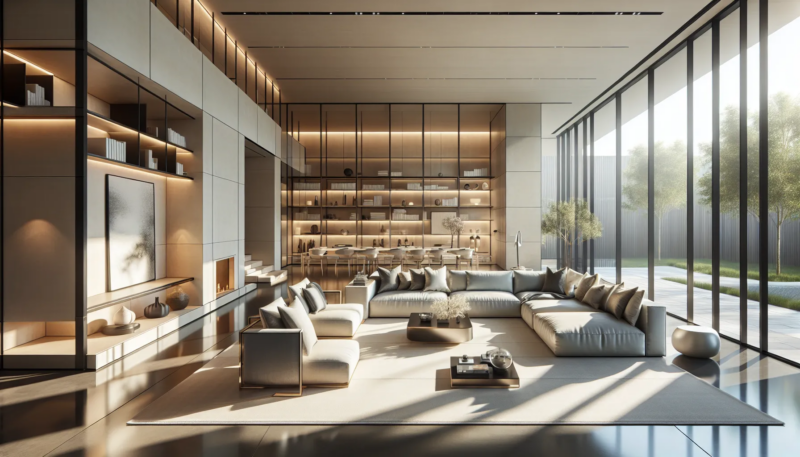Unity design is a fundamental principle that shapes how elements come together in a cohesive manner. It’s not just about aesthetics; it’s about creating a seamless experience that resonates with users. Whether in graphic design, architecture, or web design, unity ensures that every component works harmoniously, guiding the viewer’s eye and enhancing the overall message.
Understanding unity design can elevate any project by fostering a sense of belonging and coherence. Designers leverage this principle to evoke emotions and create memorable interactions. By exploring the definition and applications of unity design, one can unlock the potential for more impactful and engaging creations.
Table of Contents
ToggleUnity Design Definition
Unity design refers to the principles and practices that create a cohesive visual and experiential framework across various disciplines. It ensures that all elements—such as color, shapes, typography, and layout—function together harmoniously. Unity design serves to enhance the viewer’s experience by guiding attention effectively and reinforcing the underlying message.
Key aspects of unity design include:
- Consistency: Maintaining similar styles, fonts, and colors strengthens brand identity and user familiarity. Consistent application fosters a sense of reliability and trust among users.
- Proximity: Grouping related items visually helps establish connections and relationships between them. Proximity reduces clutter and aids in understanding content structure.
- Repetition: Repeating certain design elements creates a rhythm and reinforces brand aesthetics. This technique enhances memorability and fosters a sense of unity within the design.
- Alignment: Proper alignment of elements leads to organization and clarity. It establishes visual connections between items, making navigation intuitive and seamless.
- Visual Hierarchy: Establishing a clear order of importance through size, color, and placement assists viewers in processing information. This hierarchy guides users to focal points and key messages efficiently.
By applying these principles, designers create compelling experiences that resonate with audiences, making unity design essential in various fields such as graphic design and architecture. Understanding unity design enriches interactions, making them more memorable and impactful.
Principles of Unity Design
Unity design comprises several fundamental principles that enhance overall coherence in visual experiences. Designers leverage these principles to create strong connections among various design elements.
Visual Balance
Visual balance refers to the distribution of visual weight in a design. It can manifest in symmetrical and asymmetrical forms. Designers often achieve balance through careful placement of elements, ensuring no single component overwhelms the others. Balanced designs guide the viewer’s eye, create harmony, and enhance the aesthetic appeal. For example, placing larger images strategically with smaller text blocks can result in a well-balanced layout that feels intentional and polished.
Cohesion in Design Elements
Cohesion in design elements focuses on the relationship among components within a design. This principle ensures that elements work together harmoniously, reinforcing the overall theme or message. Cohesion can be established through consistent use of colors, typefaces, and visual styles. Designers use analogous color schemes to create a unified look while varying element shapes to maintain interest. Achieving cohesion helps viewers understand the content easily, fostering an immediate emotional connection and a memorable experience.
Importance of Unity in Design
Unity in design plays a critical role in shaping user engagement and establishing a brand’s presence. Effective application of unity principles leads to a seamless experience that resonates with users and strengthens brand recognition.
Enhancing User Experience
Enhancing user experience relies on unity in design elements, which creates an intuitive flow of information. An organized layout guides users naturally through content and reduces cognitive load. Consistent styles and visuals create familiarity, making navigation intuitive. When elements are cohesively aligned, users can process information effortlessly, fostering satisfaction and encouraging longer interaction times. A unified design encourages users to explore further, creating a more enjoyable experience overall.
Building Brand Identity
Building brand identity centers on consistency across all design platforms. Unity reinforces brand messages through visual coherence, which cultivates recognition and loyalty. Designers implement consistent color schemes, typography, and imagery to create a recognizable aesthetic. This harmony strengthens brand attributes and values, making them more memorable to audiences. When every aspect of design aligns with brand philosophy, it inspires trust and creates a strong emotional connection with consumers.
Examples of Unity in Design
Unity in design manifests in various fields, showcasing its importance in creating cohesive visual experiences. Below are examples in graphic design and web design that illustrate the application of unity principles effectively.
Graphic Design
Graphic design exemplifies unity through consistent use of colors, typography, and visual elements. Designers often implement a limited color palette across various materials, ensuring that all pieces reflect a brand’s identity. For instance, marketing campaigns frequently feature the same font styles and graphic motifs, fostering recognition. Additionally, the strategic alignment of elements within layouts enhances readability and guides the viewer’s eye through information hierarchies, creating a seamless flow.
Web Design
Web design utilizes unity to create cohesive online experiences that engage users. Consistent navigation menus, matching button styles, and uniform spacing between elements provide a harmonious interface. Websites often use repeated visuals and icons to reinforce brand identity, ensuring a memorable visit. Furthermore, effective application of layout grids organizes content efficiently, allowing users to browse intuitively without feeling overwhelmed. This overall coherence enhances user experience, encouraging longer site visits and increased interaction with content.
Evoking Emotions with Unity Design
Unity design is a fundamental principle that shapes how audiences perceive and interact with visual content. By ensuring that all elements work together harmoniously, designers can create experiences that not only capture attention but also evoke emotions. The principles of unity—consistency, proximity, repetition, alignment, and visual hierarchy—serve as essential tools for enhancing coherence and engagement.
As designers apply these concepts, they foster a deeper connection with their audience, ultimately leading to memorable interactions. A well-executed unity design not only strengthens brand identity but also enhances user satisfaction, making it an indispensable aspect of effective design across various disciplines. Embracing unity in design paves the way for impactful and lasting impressions.






